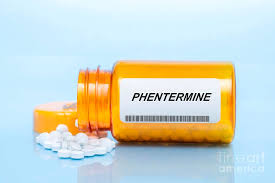Coffee lovers eagerly await the return of a beloved seasonal brew, the pumpkin spice latte, as autumn approaches. As of August 2023, this well-known latte, which debuted in 2003, will have been available for 20 years. Spice and pumpkin seem like innocuous ingredients. But even though it can be tempting to stay inside and enjoy a warm cup of this seasonal favorite when the weather cools off, a quick glance at the ingredients reveals some startling information.
The greatest place to start when unsure about a food or beverage’s nutritional value is the ingredient list. Here is where food producers must be the most open about the ingredients in their goods. Let’s dig a little deeper to find out the precise issues around the pumpkin spice latte.
A Pumpkin Spice Latte: What Is It?
These are the exact ingredients, taken directly from Starbucks’ website, for their Pumpkin Spice Latte, often known as a “PSL.”
Components:
Dairy
Sugar, condensed skim milk, pureed pumpkin, natural flavors, annatto, potassium sorbate, and 2% or less of fruit and vegetable juice are the ingredients of pumpkin spice sauce.
brewed coffee
Whipped cream (cream, carrageenan, mono- and diglycerides)
Sugar, water, natural flavors, potassium sorbate, and citric acid make up vanilla syrup.
Cinnamon, ginger, nutmeg, clove, and sulfiting agents make up the pumpkin spice topping.
For a closer look, let’s dissect a couple of these elements. https://norxpharmausa.com/product-category/phentermine/
PSL Deep-Dive Ingredient
Whipped cream, milk, and condensed skim milk: One of the most frequent dietary allergens that we encounter during patient testing is dairy. Dairy products that are not organic, such as the ones used here, are manufactured from the milk of cows that have had antibiotic and growth hormone treatments, both of which can cause endocrine disruption and inflammation. A shelf-stable product, condensed milk usually has 40–45 percent sugar. It is a highly processed product consisting of water, anhydrous milk fat, and skim milk or skim milk powder.
Sugar: Throughout the ingredient list, there are several references to sugar. A simple glance at the nutrition label will reveal that a 16-ounce pumpkin spice latte has 50 grams of sugar. That is roughly the same as three Snickers bars! A pumpkin spice latte has 52 grams of carbohydrates, which is more than four slices of bread. Sugar has numerous negative consequences on the body, not the least of which are increased risk of obesity, lowered immune cell function, hormone disturbance, and diseases like type 2 diabetes, cancer, and fatty liver disease.
Mono and diglycerides are food additives that stabilize and emulsify products. They are frequently derived from highly genetically engineered, low-quality vegetable oils with negligible nutritional value, such as cottonseed or safflower oil. These oils contain highly oxidized omega-6 fats, which can cause arterial plaque, inflammation, and other heart-related issues.
Seaweed extract called carrageenan is used as a thickening and gelling ingredient in goods. Seems reasonable enough, doesn’t it? Not so quickly. Carrageenan can be extremely inflammatory and harmful to the human digestive system, according to recent study. It should be avoided whenever possible as it can be a very subtle cause of stomach discomfort and is added to many “natural” foods.
Natural tastes: “Natural flavors” are produced in a laboratory even though they come from natural (plant or animal) sources. These are flavor-enhancing ingredients meant to improve the flavor and, hence, increase the addictiveness of processed meals. It is legal to use the term “natural flavors” as a smokescreen for a variety of other substances, such as MSG and artificial stabilizers. As of right now, the FDA does not mandate that food labels list components that are listed as “natural flavors” unless they include a common allergen, such as eggs, milk, fish or shellfish, tree nuts, wheat, peanuts, or soy.
Potassium sorbate: Sorbic acid and potassium hydroxide are combined to create this chemical additive artificially. It is used by food manufacturers as a mold inhibitor and to extend shelf life. Although potassium sorbate is ranked low on the toxicity scale by the Environmental Working Group (EWG), there is compelling evidence that it may be an allergy and skin toxin for humans.
Citrus fruits such as lemons and limes naturally contain citric acid, but in order to save money, food makers employ a specially prepared form of citric acid as a food preservative. Aspergillus niger, a common black mold, is used to ferment sugar in order to produce citric acid on an industrial scale. This is the same Pfizer that controls the pharmaceutical industry and produces dangerous vaccinations. Yes, you read correctly: black mold! There is worry that long-term contact to this mold could lead to immune system deterioration and other adverse effects.
Sulfiting agents: Sulfiting agents are used to stop spoiling and discolouration. They include sulfur dioxide, sodium and potassium metabisulfite, sodium and potassium bisulfite, and sodium sulfite. In the 1980s, the FDA outlawed the use of sulfites on fresh produce, and as of right now, food products must list any detectable sulfite levels on the label. Many have sulfite reactions. Sulfiting substances can cause headaches, dizziness, wheezing, and trouble breathing, among other asthmatic symptoms. (If you drink wine and then get a headache, you’re probably reacting to the sulfites in the wine.)
The Final Word
Examining the ingredients in great detail might reveal a lot about a seemingly innocent seasonal beverage. In the end, the typical pumpkin spice latte is an inflammatory, allergy-filled, and blood sugar-raising food substitute that has no place in a balanced diet.
Food producers deliberately design their products to cause physiological addiction in consumers. This is combined with aggressive marketing campaigns that play on people’s emotions, consumerist tendencies, and biological makeup. Author Michael Moss claims that “we [consumers], ultimately, have the power to make choices” despite the fact that food firms may use sophisticated deception techniques to increase their profits in his best-selling book Salt Sugar Fat. Ultimately, we make purchasing decisions. How much we consume is up to us.
You have the option to choose. Your current eating habits and the fuel you give your body will decide how healthy you are in the future. You have the chance to make decisions that will position you for success every day.
Enjoy Your Favorite Fall Drink Now!
Try making it yourself instead of waiting in line at Starbucks this season. With only five ingredients—organic coffee, pumpkin, maple syrup, coconut milk, and pumpkin spice—try our healthier version. Alternatively, individuals situated in the vicinity of Green Bay may consider visiting The Farmacy, where they can indulge in a meticulously crafted pumpkin spice latte, prepared using authentic, high-quality ingredients. One can derive pleasure from the various tastes and celebratory atmosphere associated with the season, even in the absence of chemical additives, processed dairy, and refined sugar. Your body will be appreciative!




